Cryptanthus Flower: Home Care
Florists appreciate the tropical cryptanthus plant not so much for its flowers as for its unusual leaf color and shape that resembles a star. It is popularly called the “earthen star”. Consider what this flower is, how to care for and grow it at home.
Botanical description of the plant
Cryptanthus is different in that it does not have a stem or is very short - depending on the species. The flowers are white, barely noticeable and hidden deep in the sinuses. The leaves are dense, can be both the same color and multi-colored. Stripes on the leaves can be white, yellow, light green, red. On the peduncle, several inflorescences of the panicle or ear type are formed. Cryptanthus blooms in summer, in June.
| Root system | Ramified |
| Stem | Short or absent |
| Leaf shape | Lanceolate |
| Leaf color | Multi-colored |
| Flower shape | Spike-like |
| Flower color | Whites |




















The main types
Indoor grow several types of this flower:
- Cryptanthus is two - stripe - the leaves are short, up to 10 cm in diameter, with a rosette arrangement and wavy edges. The diameter of the outlets is up to 15 cm. Small teeth are located along the edge. The flowers are white, discreet in appearance.

- Cryptanthus stemless - has an almost imperceptible short stem. The leaf plates are pointed, with a wavy edge, up to 20 cm long. The color of the leaves is green with light stripes.
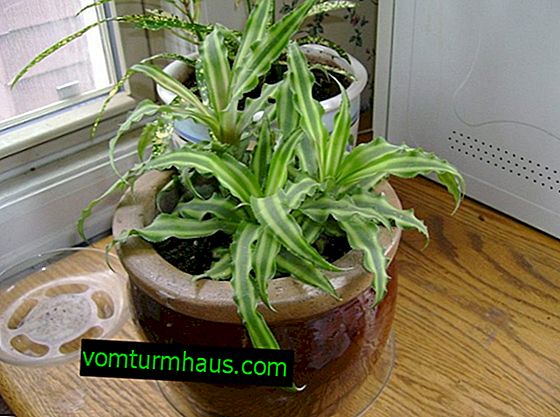
- Bromeliad cryptanthus - the stalk is short but noticeable. The leaves are bright, wavy. Coloring can be both green and copper-red.
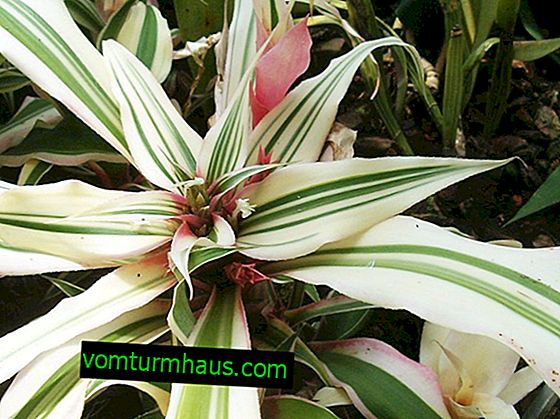
- Foster Cryptanthus - leaves are long and narrow, with transverse stripes. Their edges are wavy, small scales are located below.
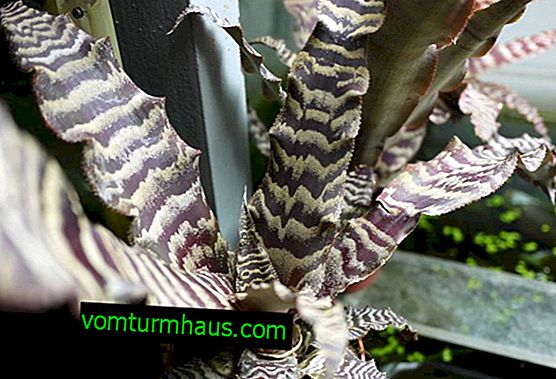
- Cryptanthus cross-striped - has a transverse color. The color is green or dark green, the flowers are small white.
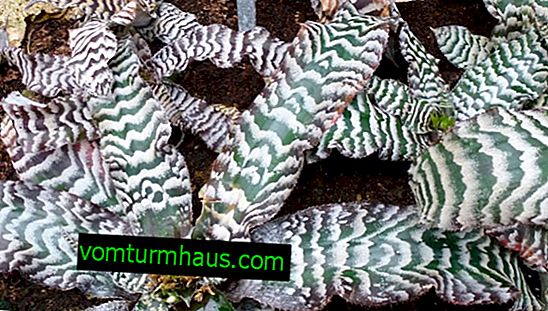
- Cryptanthus red star - the name speaks for itself - "red star". Leaf plates have bright maroon stripes. This species blooms very rarely.

Conditions for successful growing at home
In order for the cryptanthus to develop well and to please you with its appearance for a long time, when growing it, it is necessary to observe certain requirements for light and humidity.
Location and Lighting
Cryptanthus can be placed on any free windowsill. Any light is suitable for him, with the exception of the direct rays of the sun, which cause burns to the leaves. In dim light, the color of the plant becomes less pronounced, therefore, with a short daylight the plant needs additional lighting.
Did you know? Cryptanthus is a relative of pineapple, because it belongs to the same bromeliad family, which unites more than 2000 plant species.
Temperature and humidity
This exotic plant does not perceive a sharp drop in temperature. If it drops below + 15 ° C, this is fatal for cryptanthus. Comfortable temperature for him in the summer is up to + 24 ° С, and in the autumn-winter period a temperature in the region of + 20 ° С is allowed. Since the rainforest of Brazil is the birthplace of cryptanthus, high humidity is very important for it. The flower should be sprayed regularly, wipe the leaves with a wet cloth. To maintain a constant level of humidity, expanded clay is poured into the tray and water is added.
How to care at home
The flower is not too picky in care and is well suited for those who do not have time to bother with plants for a long time.

Watering
In order to know when it is time to water the cryptanthus, you need to monitor the topsoil in a pot with it. Dry - it's time to water. From the beginning of spring to September, the plant needs more water, and in the rest of the period watering is reduced. It is watered only with room water, previously settled. Excess water is poured from the pan, otherwise the roots will rot. Watering is carried out on top of the soil.
Important! X cryptanthus belongs to the bromeliad, but, unlike most representatives of this family, it can not be watered into a leaf outlet - it rots.
Top dressing
This plant is fed only in spring and summer with a frequency of once every 2 weeks. For this, ready-made fertilizers for flowering plants are used. In autumn and winter, fertilizers are not applied.

Pruning
The cryptanthus does not need additional bush formation. Only daughter sockets are cut for reproduction.
Transfer
This tropical flower grows very slowly, so it is rarely transplanted. His root system is small, grows in width. The capacity for landing should be taken small, but wide. Soil should pass moisture and air well. It is best to use a purchased mixture for bromeliads. At the bottom of the flowerpot, they fill up 1/3 of the drainage layer, then the soil. For transplanting, the plant is carefully removed together with an earthen lump from the old pot, the old drainage and part of the earth are removed and planted in a new pot. After the transplant, water and spray from the spray gun.
Find out how and when to transplant indoor plants.
Breeding
Cryptanthus propagates in two ways: lateral processes and seeds. Consider each method in more detail.
Lateral processes
After the flowering period ends, daughter rosettes appear at the base of the flower. After 2 months, leaflets will be visible on them and roots will appear. This suggests that it is time to separate them. Make it a sharp and clean knife. “Children” are planted in separate containers filled with sphagnum moss. Young plants are placed in a warm place, away from sunlight, and covered with a film or glass. Every day they need a 15-minute airing. Regular watering is also important - drying of the topsoil should not be allowed.
Video: cryptanthus breeding
Seeds
Seeds for sowing are only freshly picked. They are soaked in a pink solution of potassium permanganate for 24 hours. Then sown in a mixture of peat with sand, pre-moistened. Cover the containers with film or glass and keep in a warm place. The first shoots appear after 10 days. They are kept in a greenhouse for another 2 weeks, and then gradually opened. When young plants form full rosettes, they are transplanted into separate flowerpots or into a large aquarium for cryptanthus.
Did you know? Cryptanthus will be the perfect complement to a home bottle garden. Now this direction is very popular in floristry, and the process of creating a garden in a glass container is very exciting.
Possible growing problems
When growing cryptanthus, flower growers are often faced with troubles such as diseases and pests.
Of the latter, the most common:
- Spider mite - punctures appear on the edge of the leaves, like from a pin. Then the entire plate is covered with a thin web.
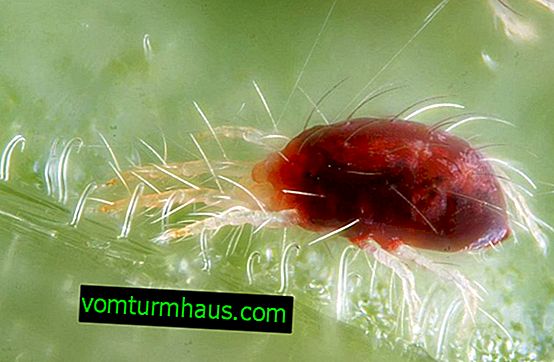
- Whitefly - The surface of the leaf becomes sticky. White specks are visible on the back side.
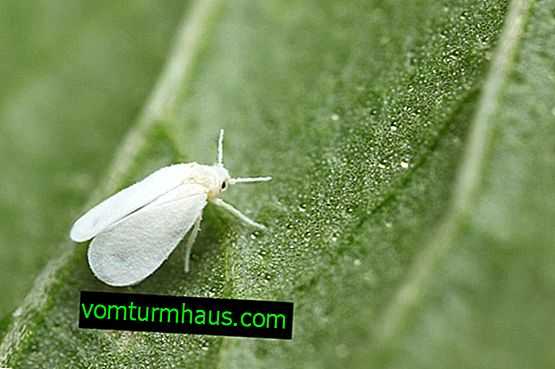
- Scutellum - the underside of the leaves is covered with brownish tubercles.
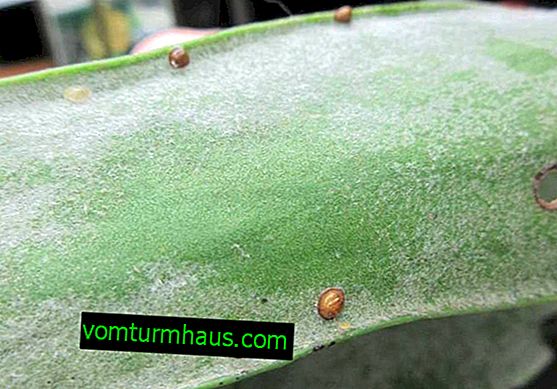
- Mealybug - in the internodes and on the back of the leaves, white formations appear, similar to lumps of cotton wool.
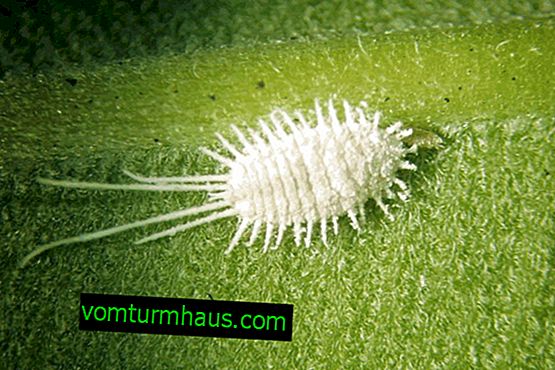
If pests are detected, the plant is quarantined - it is isolated from other plants so that insects do not hit them. Treatment consists of treatment with systemic insecticides (Aktara, Aktellik, Spark). When a scab appears, wash the leaves with a soap or alcohol solution.
Important! It is advisable to carry out all flower care work with rubber gloves, since this plant has poisonous properties.
A plant can also have these painful symptoms:
- pale color - little light;
- leaves fade - not enough moisture;
- leaf plates dry - hard water, lack of watering;
- decay at the base - waterlogging.
Even a novice grower can grow an exotic cryptanthus plant at home. The plant is unpretentious in care, and subject to the minimum rules, in a few years you will have a real tropical corner of these cute little stars at home.













